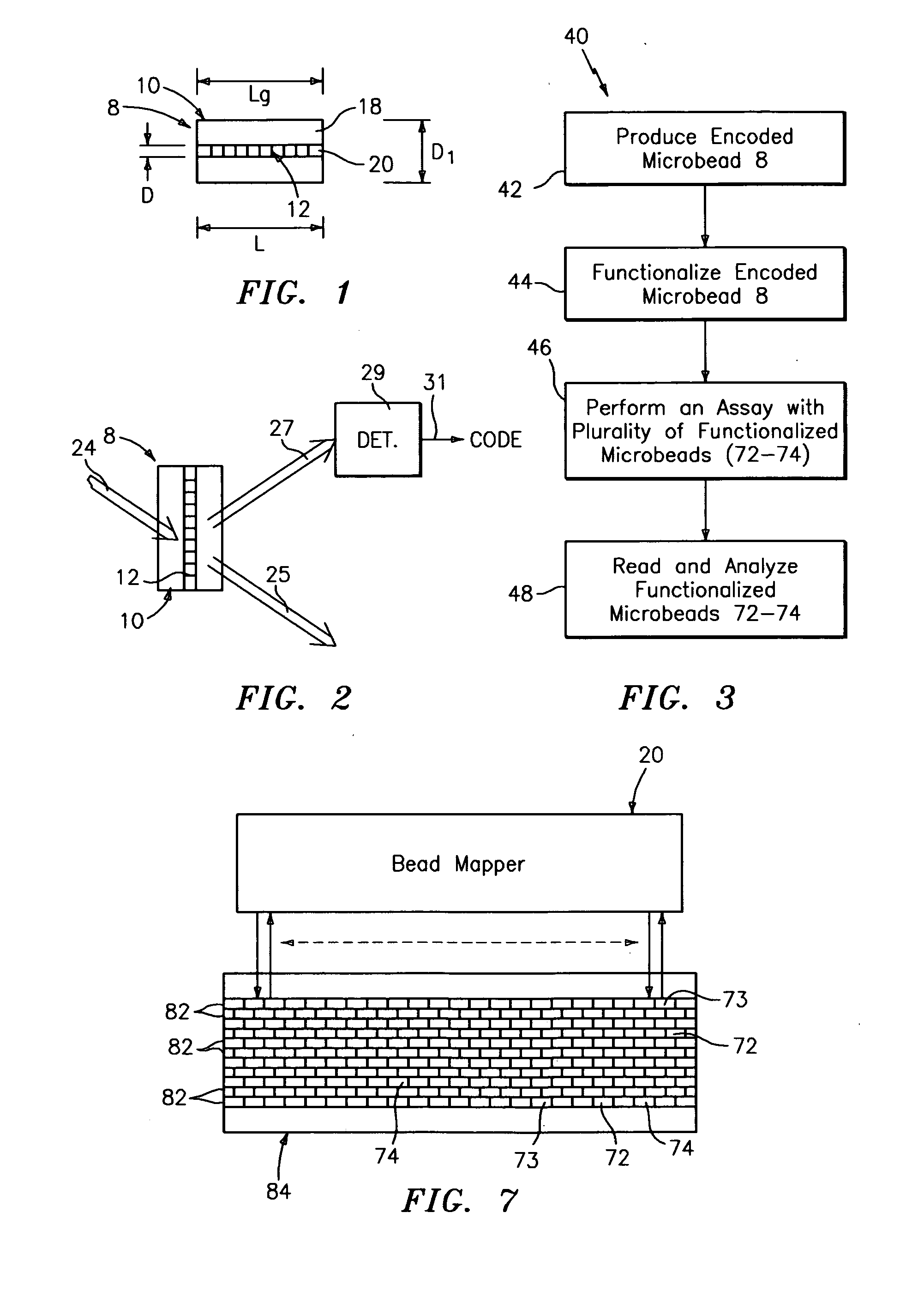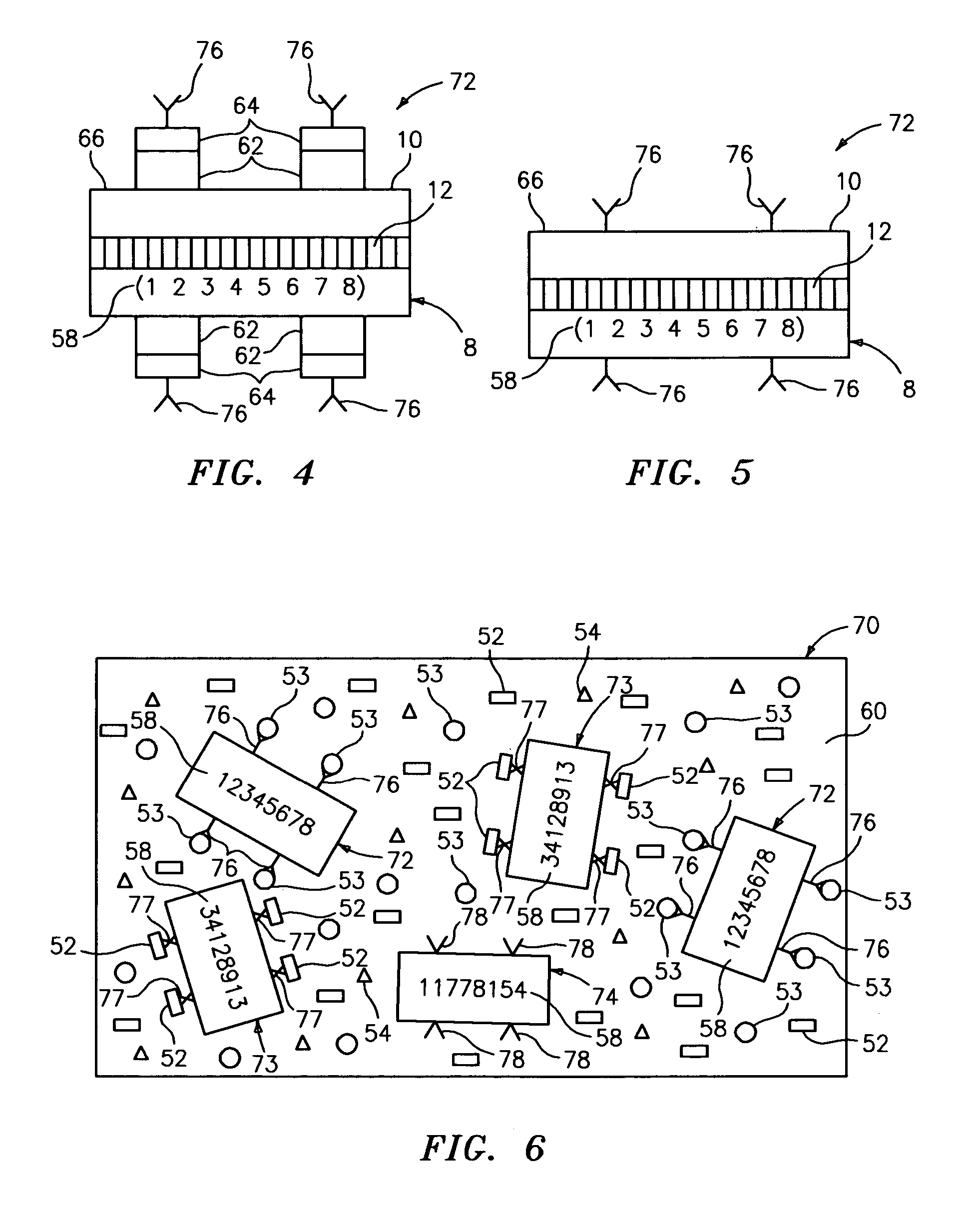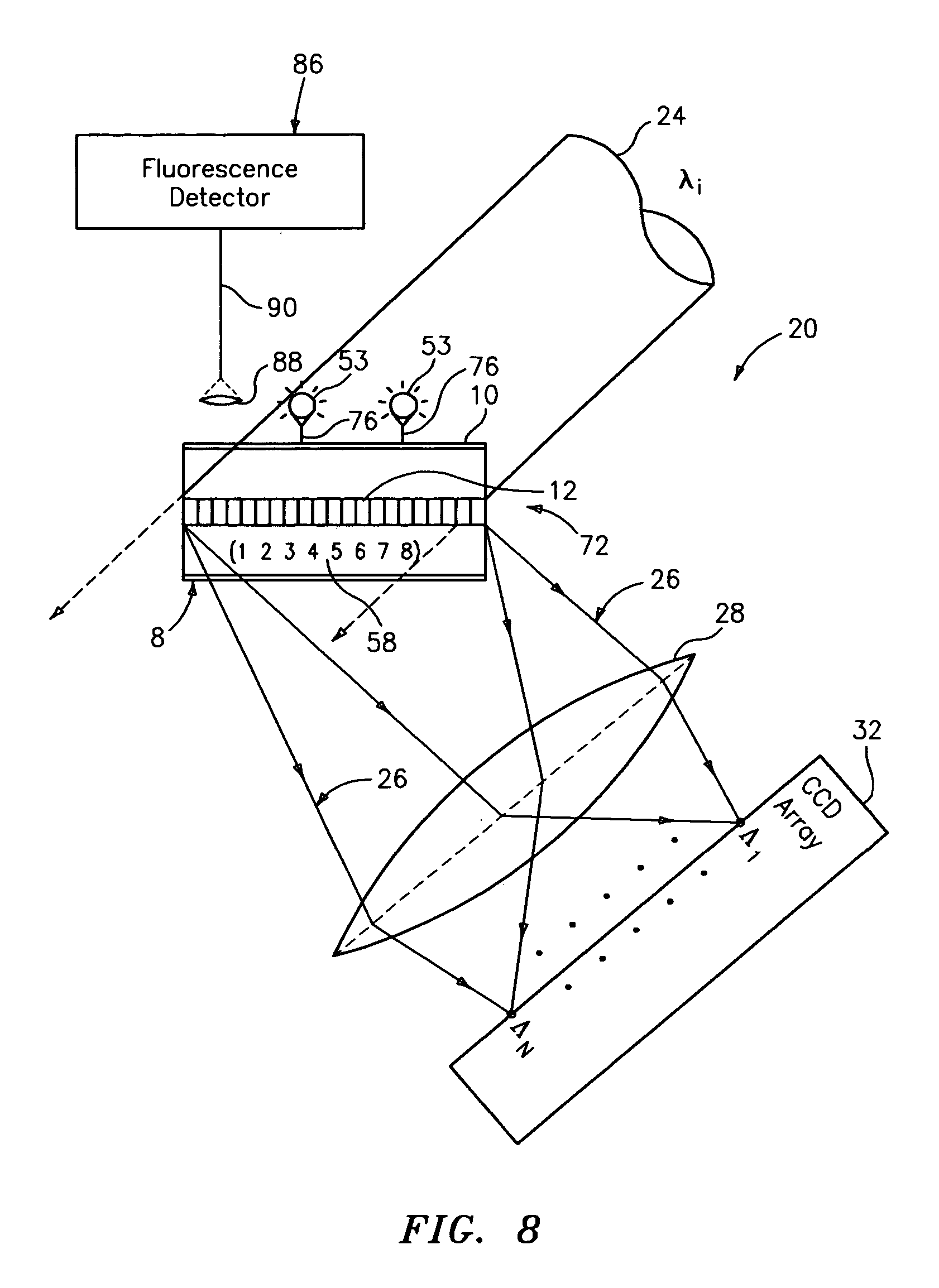Diffraction grating-based encoded articles for multiplexed experiments
a technology of multiplexing and diffraction grating, applied in the field of assay methods, can solve the problems of limited planning or foresight employed, difficult to resolve adjacent spots, and impose spatial limitations on the process, and achieve the effect of facilitating the use of methods
- Summary
- Abstract
- Description
- Claims
- Application Information
AI Technical Summary
Benefits of technology
Problems solved by technology
Method used
Image
Examples
example 1
Specificity of Detection of Hybridization by Coded Beads
[0320] An assay was performed with cylindrically shaped glass beads, having dimensions of about 450 microns by 65 microns, using 9 different bead codes, with about 20 to 30 beads of each code. Four different oligonucleotide probes, Probe #1, Probe #2, Probe #3, Probe #4, were bound to four different beads whose codes were 1106, 2090, 8740, and 4424, respectively (see Table 1). The five remaining bead codes, 682, 2470, 2389, 2454, and 618, did not have a DNA probe bound thereto and were used as a control in the assay. Table 1 below shows the bead codes, the DNA probe sequence and Probe # bound to the bead and the melt temperature (Tm) of each DNA probe, which provides relative hybridization strength with respect to Probe #1. Probes #1-4 were randomly selected to provide a variety of different melt temperatures, and thus varying amounts of binding affinity strength difference between the four DNA Probes.
[0321] The four 26-nt DN...
example 2
Labeled Oligonucleotide Sample Assays
[0329] A set of 67-nt oligonucleotide-bearing particles was synthesized in situ on coded particles. The probes are shown in Table 3. These particles were hybridized with the 5′-Cy3-labeled 67-nt complement to the phix310s probe shown in Table 2.
TABLE 2SEQIDCodeProbe NameProbe SequenceNO.342PhiX310sGCCCTGGTCGTCCGCAGCCGTTGCGAGG5TACTAAAGGCAAGCGTAAAGGCGCTCGTCTTTGGTATG345PhiX310asCATACCAAAGACGAGCGCCTTTACGCTTG6CCTTTAGTACCTCGCAACGGCTGCGGACGACCAGGGC346PhiX604sATTAGCATAAGCAGCTTGCAGACCCATAAT7GTCAATAGATGTGGTAGAAGTCGTCATTTGGCGAGAA357PhiX604asTTCTCGCCAAATGACGACTTCTACCACATC8TATTGACATTATGGGTCTGCAAGCTGCTTATGCTAAT358PhiX1072sCATTTCCTGAGCTTAATGCTTGGGAGCGT9GCTGGTGCTGATGCTTCCTCTGCTGGTATGGTTGACG5541PhiX1072asCAAGTATCGGCAACAGCTTTATCAATACC10TGAAAAATATCAACCACACCAGAAGCAGCATCAGTGA5546PhiX1353sGCGCGGTAGGTTTTCTGCTTAGGAGTTTA11ATCATGTTTCAGACTTTTATTTCTCGCCATAATTCAAA8789PhiX1353asGAGAAATAAAAGTCTGAAACATGATTAAAC12TCCTAAGCAGAAAACCTACCGCGCTTCGCTTGGTCAA
The hybridization buffer w...
example 3
Detection and Quantitation of a Target Nucleic Acid in a Sample Containing a cDNA Library
[0331] Referring to FIG. 40, a biological assay was performed with the cylindrically shaped encoded glass microbeads described herein, having synthesized probes attached to the beads seeking a natural biological target analyte.
[0332] Each probe was bound to a particle having a unique code. There were 8 different PhiX174 DNA oligonucleotide probes obtained that were complementary to 8 different PhiX174 DNA restriction fragments designated phix310s, phix310as, phix604s, phix604as, phix1072s, phix1072as, phix1353s, and phix1353 as (where s=sense and as=antisense). The fragments were isolated as follows. (1) Four HaeIII digested fragments from bacteriophage PhiX174 were obtained from gel extraction. The fragment lengths are 310, 604, 1072, 1353 bases long respectively (hence the naming of the probes). (2) The fragments were blunt-end ligated into Sma1-digested pSP64 polyA cloning vectors (Promega ...
PUM
| Property | Measurement | Unit |
|---|---|---|
| Time | aaaaa | aaaaa |
| Time | aaaaa | aaaaa |
| Wavelength | aaaaa | aaaaa |
Abstract
Description
Claims
Application Information
 Login to View More
Login to View More - R&D
- Intellectual Property
- Life Sciences
- Materials
- Tech Scout
- Unparalleled Data Quality
- Higher Quality Content
- 60% Fewer Hallucinations
Browse by: Latest US Patents, China's latest patents, Technical Efficacy Thesaurus, Application Domain, Technology Topic, Popular Technical Reports.
© 2025 PatSnap. All rights reserved.Legal|Privacy policy|Modern Slavery Act Transparency Statement|Sitemap|About US| Contact US: help@patsnap.com



